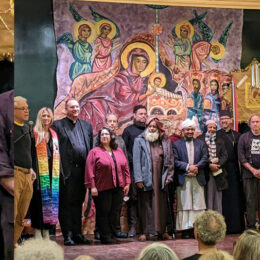Wall Street Opinion Journal BRIDGET JOHNSON Wednesday, January 18, 2006
“This man might be innocent; this man is due to die,” blared the May 18, 1992, cover of Time magazine. “Roger Keith Coleman was convicted of killing his sister-in-law in 1982. The courts have refused to hear the evidence that could save him.” Accompanying the text was a full-cover photo of a shackled Coleman, looking morose in prison garb.
Before Coleman was sent to the electric chair two days later for the rape, stabbing and near-beheading of 19-year-old Wanda McCoy, his protestations of innocence had put an anti-death-penalty PR machine firmly in his corner. This man with a previous history of attempted rape became a cause célèbre telling his woeful tale of justice gone awry. “An innocent man is going to be murdered tonight,” he declared before his electrocution.
A dramatic sound bite that proved hollow last week, when new DNA testing ordered by Virginia’s Gov. Mark Warner proved Coleman’s guilt. James McCloskey of Centurion Ministries, who had spent nearly two decades trying to prove Coleman’s innocence, was befuddled, asking the Washington Post: “How can somebody, with such equanimity, such dignity, such quiet confidence, make those his final words even though he is guilty?”
It happens all the time. Killers rally sympathetic activists behind them by using the manipulative skills that are integral to their criminal careers.
. . . more




In other news, a man who spent nearly 21 years in prison was awarded $756,900 for his wrongful conviction in an infant’s death. The facts of the case underline the reality that mistakes happen. Had this man been executed in error, what would the proper response have been to his remaining family? “Whoops!” ?
I can’t really say what my response would be were a family member to be murdered, God forbid. Nevertheless, this case underscores my feeling that the death penalty needs to be utilized in only the most horrific cases and when guilt is admitted and obvious and when the risk to society would be greater were the person to remain alive. It certainly must not be used as a means of satisfying vengeance.
That is, unless, we are willing to take the execution of innocent people as an unfortunate but acceptable side effect of keeping the death penalty in effect as it stands.